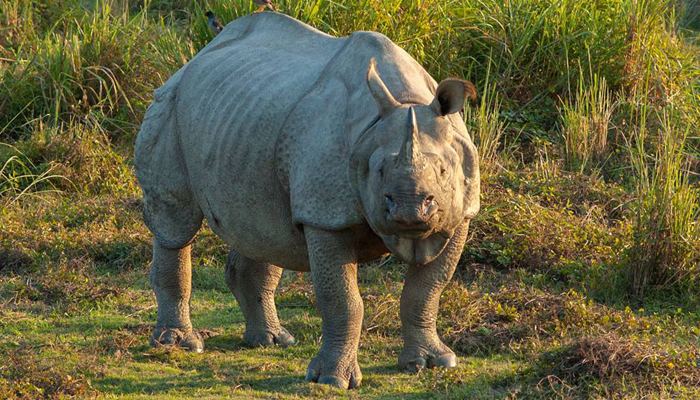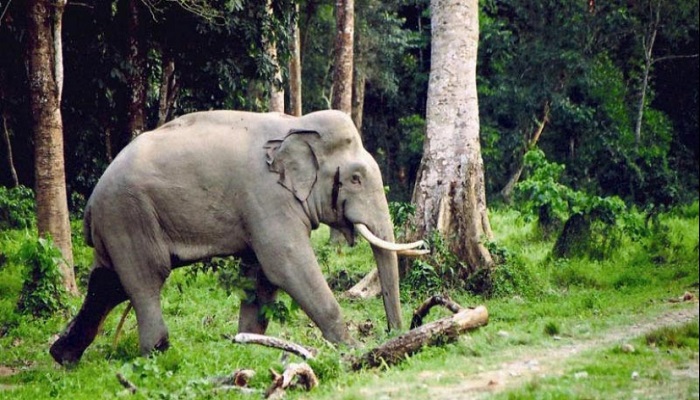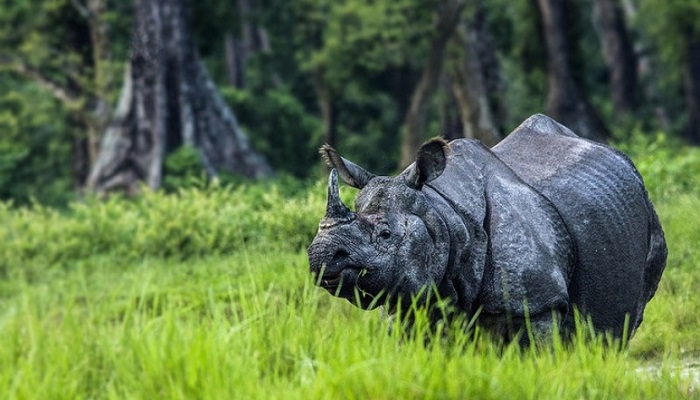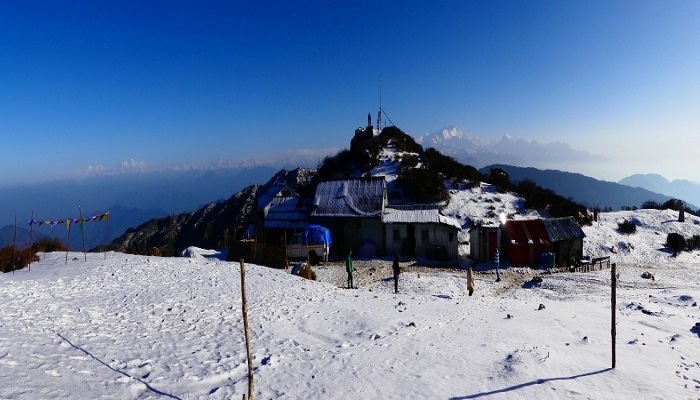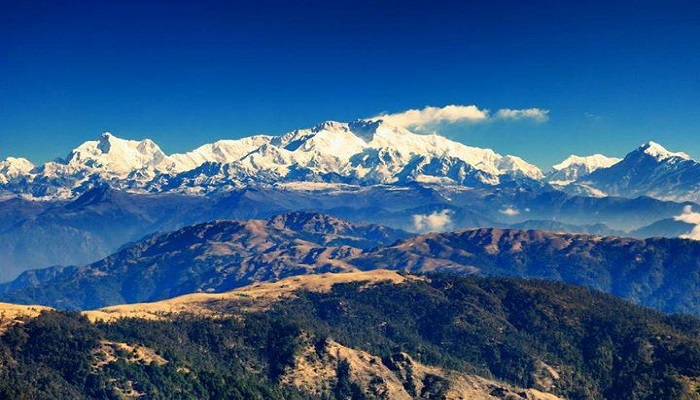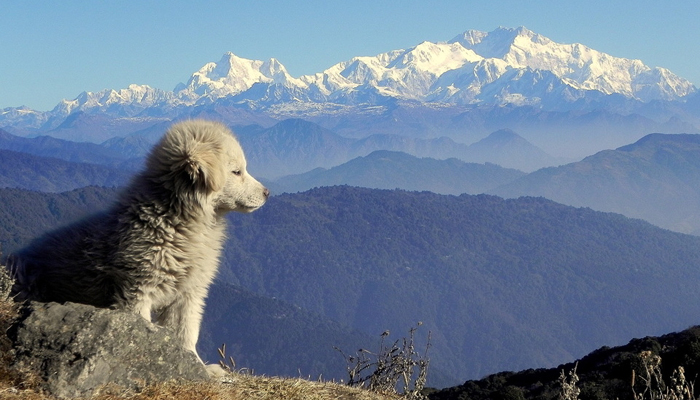Description
Wild Dooars 6 Days/5 Nights
Jaldapara-Buxa-Garumara
Day 1: Pickup and transfer to Madarihat
Reach Alipurduar?hasimara Rail Station- Pickup for Madarihat, check into our resort. After lunch, roam around the place. Overnight in Madarihat.
Day 2: Safari & sightseeing
Early in the morning go for a jungle safari to a deep forest and see wildlife closely in the Jaldapara Wildlife Sanctuary. After breakfast, visit South Khairbari Leopard Safari Park.
Overnight in Jaldapara.
The wildlife, in addition to one-horned rhinos, consists of Royal Bengal Tigers, wild elephants, sambhar, barking deer, spotted deer and hog deer, wild pig, Indian gaur, or Mithun, and a number of species of birds and peafowl. Elephant rides are arranged at dawn for viewing wildlife.
The varied tree forests and rich shrub growth provide an ideal setting for many woodland birds like Green Pigeons, Hornbills, Barbets, Parakeets, Woodpeckers, Cuckoos, Orioles, Drongos, Babblers, Thrushes, etc. Brahminy ducks, Whistling Teals, and Mergansers are winter visitors. The most common birds are the large and little Cormorant, Indian shag, Darter, Egret, Pied wagtail, River Lapwing, Moorhen, White-breasted waterhen, etc.
Day 3: Safari and transfer Jayanti
After breakfast, take a jungle safari to Buxa Tiger Reserve and Rajabhatkhawa forest. Post lunch, transfer to Jayanti. You can opt for a trip to Buxa fort.
Overnight in Jayanti.
Day 4: Transfer to Dhupjhora/Murti
Enjoy the Jayanti river bed, and visit Pukhri (the beautiful lake in the forest). After breakfast, drive towards Gorumara National park.
Night stay in Dhupjhora/Murti.
Day 5: Jungle Safari
Early in the morning go for a Jeep safari to the deep forest to experience wildlife closely. The afternoon takes a tour of Samsing and Rocky Island.
The Gorumara national park has approximately 48 species of carnivores and herbivores, 193 species of birds, 22 species of reptiles, 7 species of turtles, 27 species of fishes, and other macro and microfauna. Major bird species seen in Gorumara include Minivets, Pheasants, Hornbills, Woodpeckers, Cuckoos, cormorants, Orioles, Pigeons, and Mynas. During the winter months, migratory birds including the Brahminy duck, Ibis, teals, Stork, and other varieties can also be seen here. Other birds include Corporate, Indian shag, Darter, Egrets, Lesser adjutant stork and Lapwing. The night hunters in Gorumara are the Owls and the Nightjars.
Visit the watchtower of Chapramari wildlife sanctuary by forest vehicle.
Night stay in Dhupjhora/Murti.
Day 6: Drop at NJP/Bagdogra
In the morning, spent a few hours in the Murti river bed. Later drop at New Mal Junction (9 km from Chalsa) / Siliguri / New Jalpaiguri Railway Station / Bagdogra airport for the return journey.
Alternatively:
Garumara-Jaldapara-Buxa: 6 Nights/7 Days
Day 1: NJP to Dhupjhora/Murti
Upon arrival at Bagdogra airport/NJP/New mal Jn. Rly Station, transfer to Dhupjhora/Murti (adjacent to Gorumara National Park).
After lunch, visit the watchtower in Chapramari forest.
Overnight in Dhupjhora/Murti.
Day 2: Excursion to Samsing & Suntalekhola
Take an Early morning Jeep safari (optional on extra payment) at Gorumara National Park.
After breakfast, excursion to Jhalong, Bindu, and Paren. The last hamlet of West Bengal, Bindu is a valley encircled by hills of Bhutan and India on the banks of river Jaldhaka. It is a feast for the eyes and a stimulating experience for the mind.
Jhalong is situated on the bank of Jaldhaka on the way to Bindu in Kalimpong Sub-division. The Jaldhaka hydroelectricity project on the Jaldhaka River is a major attraction here. Back to the hotel by evening. Overnight at Dhupjhora/Murti.
Overnight in Dhupjhora/Murti
Day 3: Gorumara National Park to MadarihatS via South Khayerbari
After breakfast, proceed to Jaldapara wildlife sanctuary. Enroute visit South Khayerbari. Reach Madarihata at lunchtime. In the afternoon roaming around our resort. Overnight in Madarihat.
Day 4: Transfer to Buxa Tiger Reserve
Early in the morning take a Jeep safari to Jaldapara Wild Life Sanctuary.
After breakfast, visit Chilapata forest and proceed to Buxa.
Overnight in Buxa.
Day 5: Buxa & Jayanti
Morning trek to Buxa fort, a historical place that requires some hiking (5 km one way).
After returning from Buxa fort, take lunch and visit the Jayanti river bed on the Indo-Bhutan border. Here you can visit Pukhuri hill or take. Back to Buxa in the evening.
Overnight in Jayanti.
Day 6: Drop to Destination
Morning free. Check out from resort for Alipurduar Jn/NJP rly station/Bagdogra airport.
What You Should Know About Dooars
The Dooars or Duars are the foothills of the eastern Himalayas in North-East India around Bhutan. Duar means ‘door’ and the region forms the gateway to Bhutan from India. There are 18 passages or gateways through which the Bhutanese people can communicate with the people living on the plains. This region is divided by the Sankosh River into the Eastern and the Western Dooars. The Western Dooars is known as the Bengal Dooars and the Eastern Dooars as the Assam Dooars. Dooars are synonymous with the term Terai used in Nepal and northern India and form the only nitrate-rich plain in India.
The Dooars region politically constitutes the plains of Darjeeling Himalayas, the whole of Jalpaiguri district, and the Alipurduar district. The altitude of the Dooars area ranges from 90 to 1,750 m. Innumerable streams and rivers flow through these fertile plains from the mountains of Bhutan. The major river is the Teesta besides many others like the Jaldhaka, Murti, Torsa, Sankosh, Dyna, Karatoya, Raidak, and Kaljani rivers, among others. Monsoon generally starts from the middle of May and continues till the end of September. Winters are cold with foggy mornings and nights. Summer is mild and constitutes a very short period of the year. Dooars is the ideal place in Bengal for monsoon traveling.
The economy of Dooars is based on three “T”s – Tea, Tourism, and Timber. The main industry of the Dooars region is the tea industry. Thousands of people are engaged in the tea estates and factories. Several people are also engaged in the cultivation of betel nuts which contributes to the economy. Cultivation of other crops is done mainly for local consumption.
The area is dotted by several national parks and wildlife sanctuaries which attract a lot of tourists from all over India and abroad, making it an important contributor to the economy and also the employer of a number of people. The timber industry flourishes in this region. A number of sawmills, plywood industries, and other allied businesses also act as important contributors to the economy.
Dooars act as a doorway to Bhutan; thus, the export-import industry also flourishes in the area. The towns of Jaigaon, Siliguri, and Phuntsholing are important hubs of the export-import industry.
Contact Us for more details.

